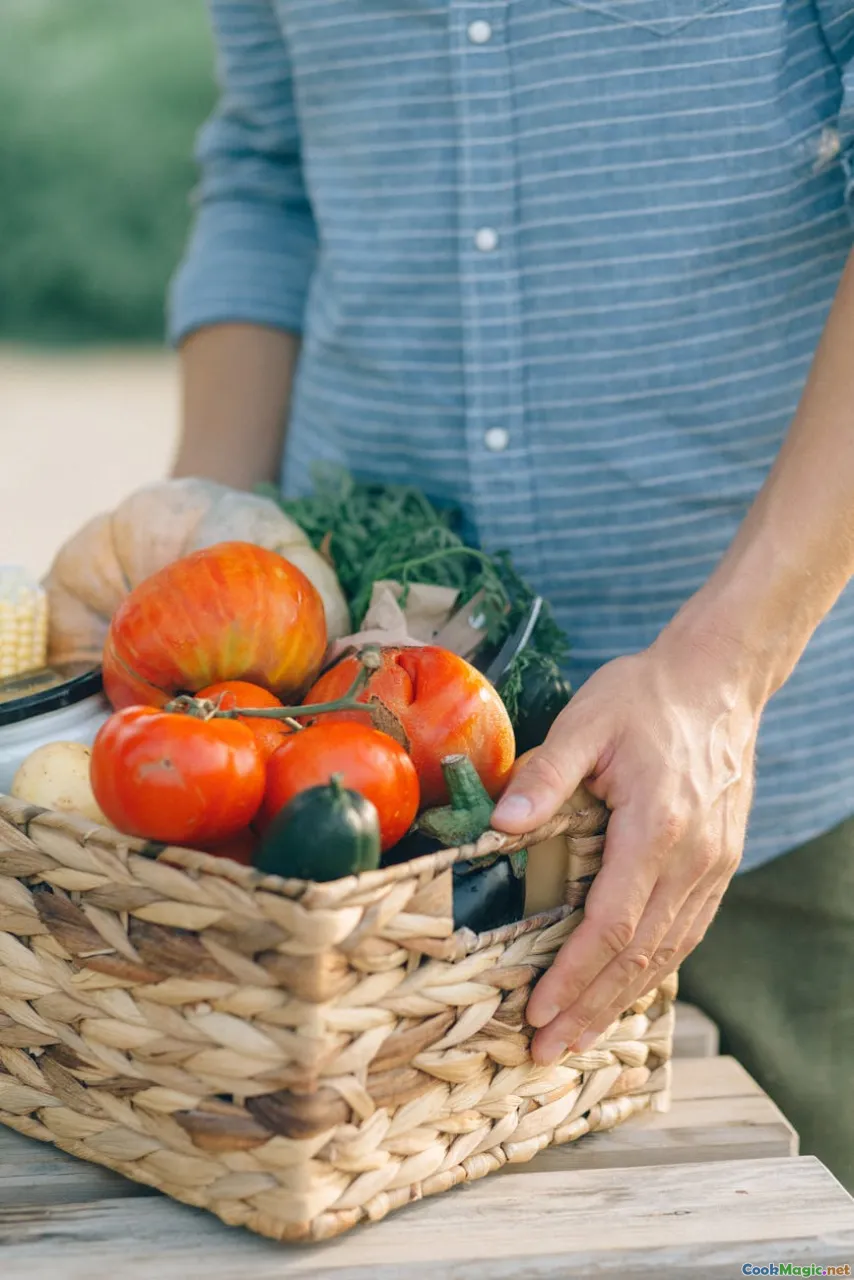Garden to Plate Greens in Vincentian Cuisine
7 min read Explore the vibrant journey of greens from garden plots to Vincentian plates, highlighting cultural significance, flavors, and sustainable practices. April 27, 2025 07:00
Garden to Plate Greens in Vincentian Cuisine
Nestled amidst the lush landscapes of Saint Vincent and the Grenadines, the journey of greens from the earth to the table is a tale of tradition, sustainability, and vibrant flavors. Imagine walking through vibrant vegetable gardens, the air thick with the aroma of freshly picked herbs and leafy greens, before transforming these humble ingredients into hearty, flavorful dishes that embody the island’s rich cultural tapestry.
The Cultural Significance of Greens in Vincentian Cuisine
In Saint Vincent and the Grenadines, greens are more than just ingredients; they are woven into the fabric of daily life and cultural identity. For generations, local farmers have cultivated a variety of leafy vegetables—such as callaloo, spinach, cho-cho (chayote), and the hardy amaranth—each carrying stories of resilience, tradition, and community.
These greens are central to traditional dishes like ‘Green Fig and Saltfish’, where fresh, tender greens complement the salt-cured fish, creating a harmonious blend of salt, earth, and freshness. They also feature prominently in soups, stews, and as side dishes that highlight the island’s commitment to utilizing what the land offers.
From Garden Beds to Market Stalls: The Local Farming Scene
The story of Vincentian greens begins in small, family-run farms scattered across the islands. These plots are often nestled in the backyard gardens of local families, where the soil is enriched with organic compost made from kitchen scraps, and the planting is synchronized with the island’s tropical climate.
Farmers like Mr. Joseph, a veteran gardener from Wallilabou, have dedicated their lives to growing vibrant greens that are both nutritious and resilient against the island’s unpredictable weather patterns. His garden, bursting with dark leafy callaloo and bright green chayote, is a testament to sustainable farming practices.
The lush, fertile volcanic soil combined with ample sunshine creates perfect conditions for year-round cultivation. Harvesting is a communal affair—families gather in early mornings, plucking leaves with reverence, mindful of the tradition that links them to their ancestors.
Market days see these greens transported to local markets such as the Kingstown Market, where stalls overflow with freshly cut greens, their vibrant colors a feast for the eyes. The aroma of freshly picked herbs mingles with the salty sea breeze, enticing passersby.
Cooking with Greens: Techniques and Traditions
In Vincentian cuisine, greens are prepared with a reverence that respects their natural flavors while enhancing them through simple techniques. The key is to preserve their freshness and texture.
Blanching and Sautéing
Many cooks blanch greens briefly in boiling water to retain their vivid color and tenderness before sautéing with garlic, onions, and local spices like thyme and scotch bonnet peppers. The result is a fragrant, slightly spicy side dish that complements grilled fish or stewed meats.
Stews and Soups
Greens are often added to hearty stews, such as the beloved ‘Pepperpot’, where they meld into a rich, flavorful broth. The greens absorb the spices and smoky flavors, offering a comforting, nutritious boost.
Raw Uses
Some varieties, especially tender herbs like basil or parsley, are used raw in salads or as garnishes, adding freshness and brightness.
Flavor Profiles and Sensory Experiences
The act of eating greens in Vincentian cuisine is a multisensory experience. The aroma of freshly cooked callaloo—earthy and slightly sweet—invites anticipation. The texture varies from tender leaves that melt in the mouth to crisp, fresh stalks that provide a satisfying bite.
Visually, the vibrant greens contrast beautifully with the deep reds of peppers or the golden hue of fried plantains, creating plates that are as colorful as they are flavorful.
Personal Stories and Community Bonds
For many Vincentians, growing and cooking greens is a family tradition passed down through generations. I recall visiting a local farm with Mrs. Williams, whose family has cultivated greens for over fifty years. Her stories of planting seeds as a child, and the communal joy of harvest festivals, highlight how greens symbolize more than nourishment—they embody resilience, community, and cultural pride.
In community gatherings, you’ll often see families preparing large pots of greens, sharing stories and laughter as they cook together. These moments reinforce the importance of local food sovereignty and the deep-rooted connection between the land and its people.
Sustainable Practices and the Future
Today, sustainability is at the forefront of Vincentian greens cultivation. Many farmers are adopting organic practices, avoiding pesticides, and embracing permaculture principles to preserve the land for future generations.
Urban gardening initiatives have also sprouted in Kingstown and other towns, encouraging city dwellers to grow their own greens in small spaces, promoting self-sufficiency and environmental consciousness.
Conclusion: A Garden-to-Plate Journey Worth Celebrating
The journey of greens in Vincentian cuisine exemplifies a beautiful harmony between land, culture, and community. From the fertile gardens to the bustling markets, and finally to the plates that nourish and delight, greens are a testament to the island’s rich agricultural heritage and its ongoing commitment to sustainable, flavorful living.
So next time you savor a plate of callaloo or a fresh green salad during a Vincentian feast, remember the vibrant journey these greens have traveled—an authentic story of tradition, resilience, and the pure joy of farm-to-table goodness that defines Saint Vincent and the Grenadines.









